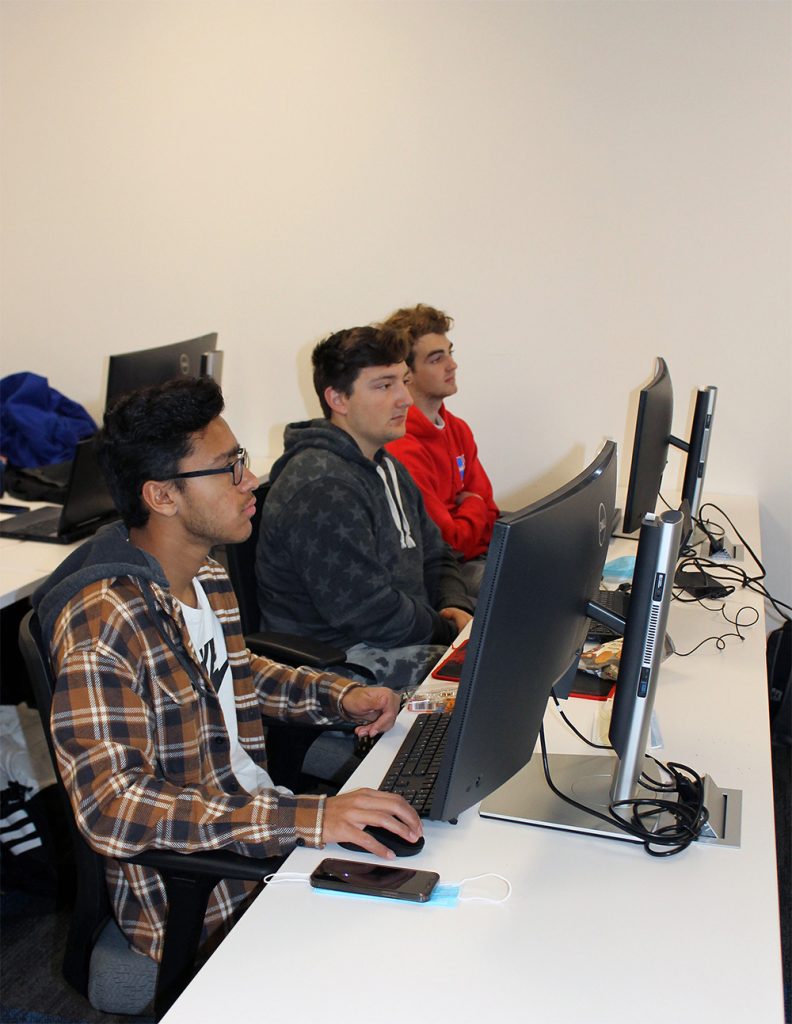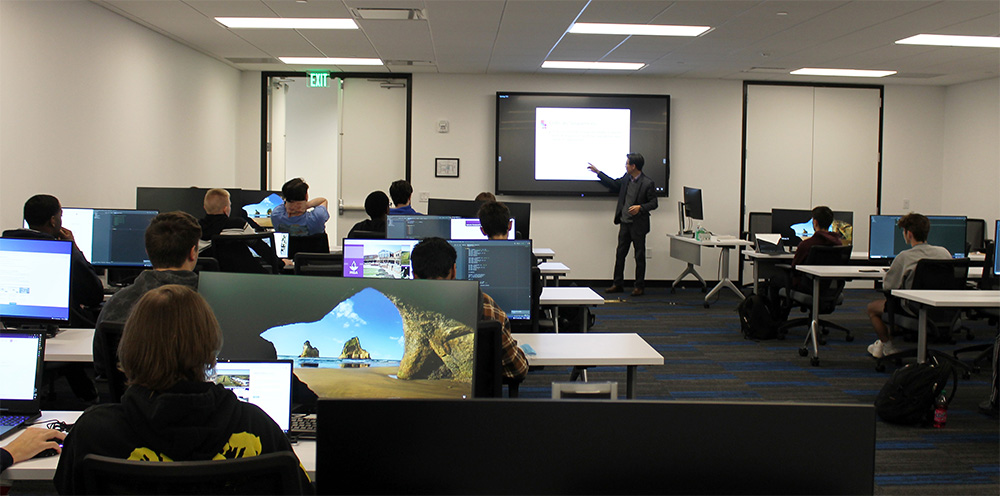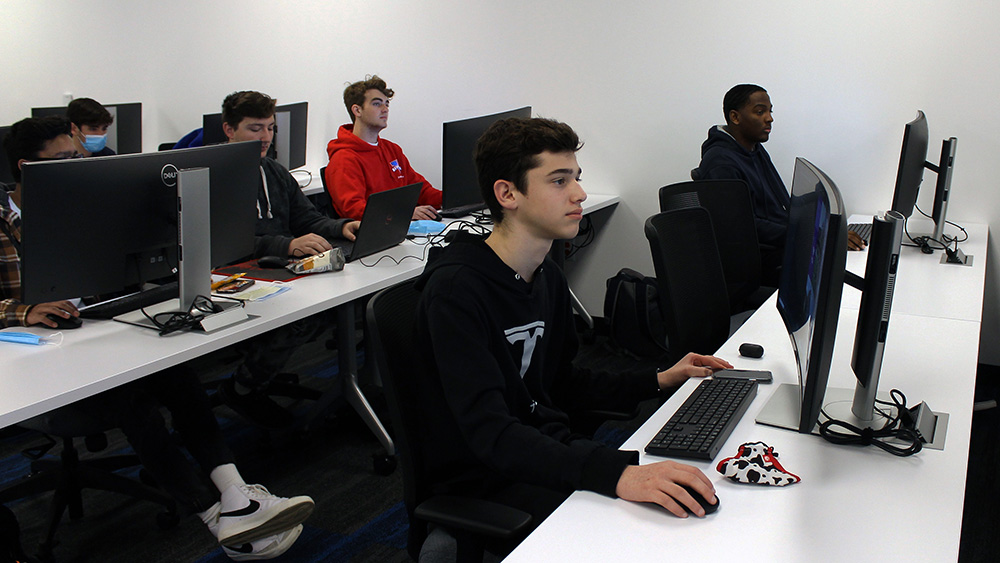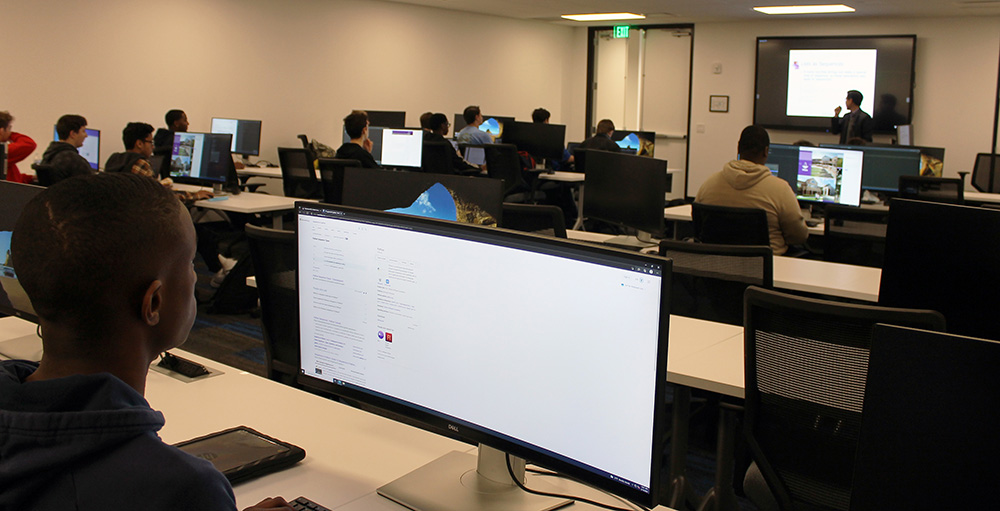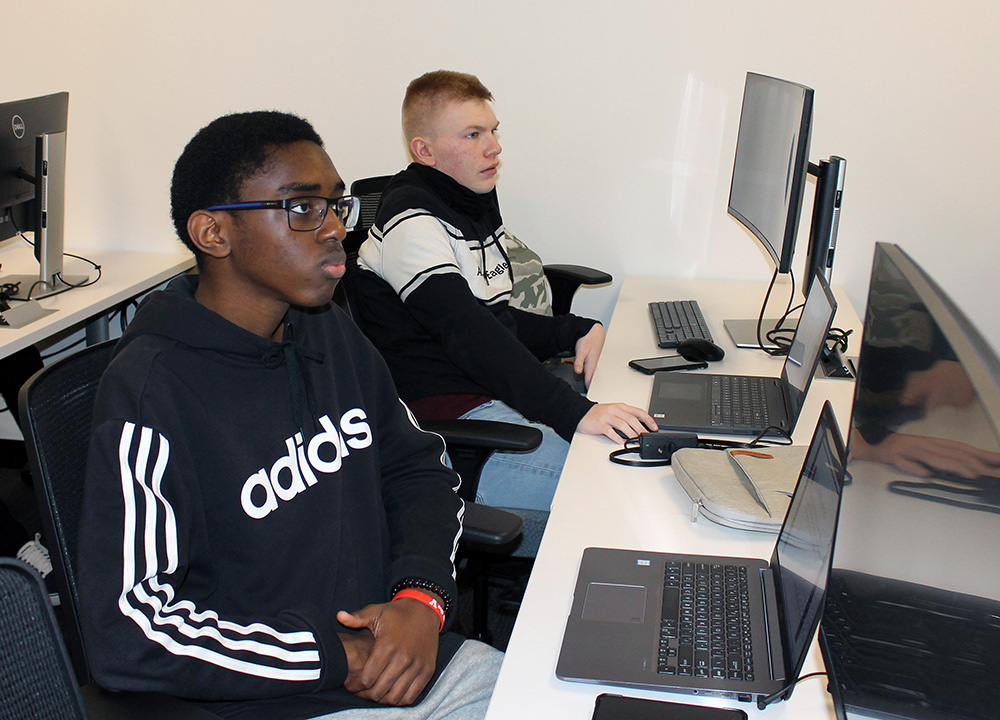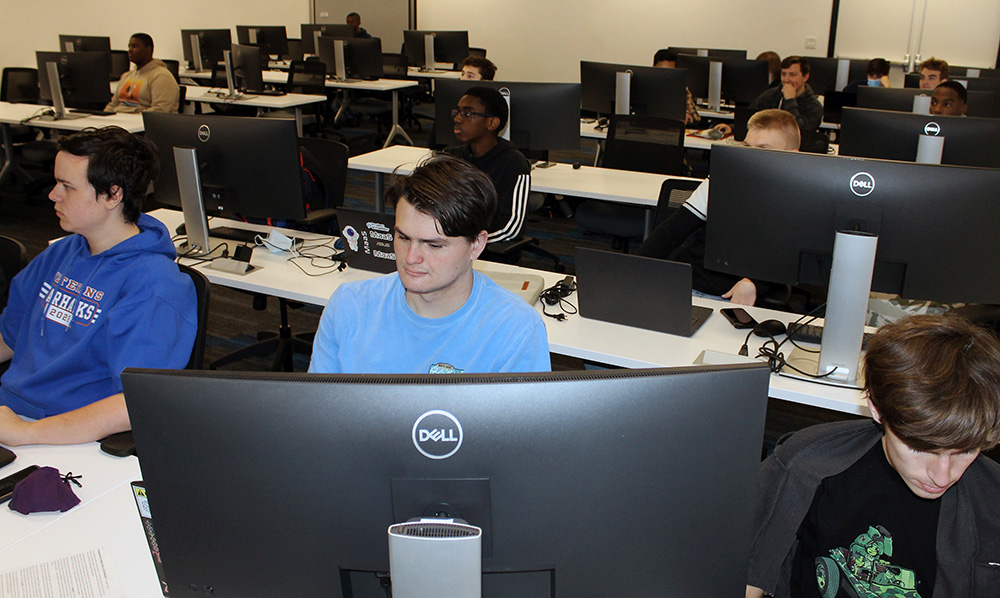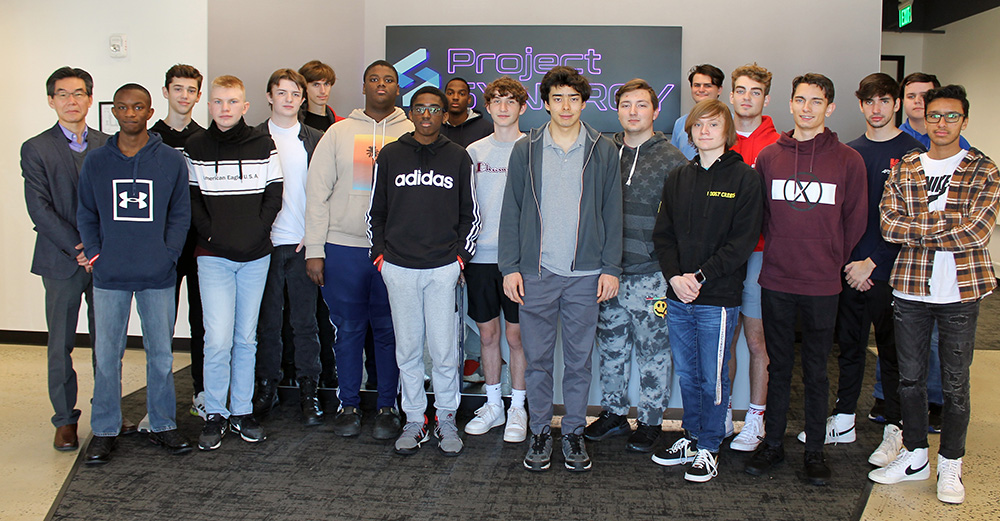Middle Georgia State University (MGA) continues to position itself as a committed higher education partner to nearby Robins Air Force Base (RAFB) through its educational programs that bridge the employment needs of the base and the local public school district. RAFB is the region’s largest employer in Houston County, Georgia, and requires more IT and computer science professionals as its mission transitions from repairing, modifying, and overhauling aircraft to working with Advanced Battle Management Systems, a new high-tech platform. To respond to this major shift and retain high-paying jobs in the central region, the Houston County School District (HCSD) needs to support the science, technology, engineering, and math (STEM) workforce at the base. MGA currently offers majors and degree pathways related to the employment needs at the base, but it recognized the potential in creating a strategic program where the base and school district could meet and graduate more people into technology jobs.
Attracting high school students to technology careers was a challenge MGA was willing to undertake. Many students in the school district are not aware of the STEM career opportunities at RAFB and its nearby contractors and lack the confidence to pursue them through higher education. They also do not have personal transportation to access dual-enrollment opportunities at local colleges. Having shorter, smarter pathways from high school to a professional STEM career would be beneficial. With that in mind, MGA partnered with the base and the school district to develop a dual-enrollment program with on-site classes with potential for paid internships at the Synergy Innovation Center in Warner Robins. Here, the students would share a space with the software engineers and information technology professionals who work at the base. This program seeks to equalize access to educational opportunities that will nurture the younger generation and respond to the evolving workforce demands of the region.
The Methodology
Creating the dual-enrollment program required MGA to coordinate on several fronts. MGA streamlined the application process, making it convenient and straightforward for the high school students who wanted to participate. The courses had to align with the HCSD high school curriculum while satisfying degree requirements at the university and meeting the specific technology needs of RAFB’s 402nd Software Engineering Group. To speed the pathway from high school to the workforce, students in 11th and 12th grade have access to four courses over two years that are offered within HCSD’s calendar. Students who complete all four courses earn a Certificate in Information Technology from MGA. Other courses are available in the STEM fields for students to pursue.
Transportation was a major hurdle that, if not addressed, would impact the participation rate of the high school students in the program. To help, Houston County School District provided transportation from four of the district’s high schools to the Synergy Innovation Center. In turn, MGA scheduled classes in coordination with the transportation time frame. To ensure easy and seamless access for students, MGA collaborated closely with the base and the school district to remove any potential barriers to participation.
The Impact
MGA’s dual-enrollment program has experienced some success in its early stages at the Synergy Innovation Center. During its first two years, 36 students enrolled and registered for 82 classes. Six students have successfully completed the first two years of the program and the four required courses to earn the Certificate in Information Technology. Several others are progressing toward its completion. The university will also measure success by the number of students who successfully complete their courses, continue their education after high school, and are selected for paid internships after they earn their high school diploma.
The long-term goals for this collaboration hold tremendous potential for the various individuals and institutions involved. Students throughout Houston County will have exposure and access to high-paying careers that meet the workforce needs of the community. The coursework and possible certificate will pave the way for lucrative and fulfilling careers or serve as a foundation for further higher education. Ultimately, the talent pool will consist of highly skilled individuals equipped with the STEM skill sets necessary for continued innovation and high-level operations. By forging these strong relationships with the base and the school district, MGA will have cemented its reputation as a proactive university deeply invested in the betterment of the community.
Key Takeaways
Building the partnerships necessary for this program takes time. Your higher education institution must be at the table when workforce needs are being discussed. Much like tending to a garden, colleges and universities plant seeds by being involved with their communities. As the relationships mature, your college or university may need to find creative ways to be a bridge from the local high schools to the area’s workforce. Educational offerings will need to be tailored to meet those expectations and incorporate innovative teaching methods and hands-on experiences. Barriers will also need to be removed to increase student access to your programs. Among those obstructions are transportation, course schedules, applications, and support services. As the program evolves, your college or university must evaluate its impact on the community, partnerships, and your reputation.
